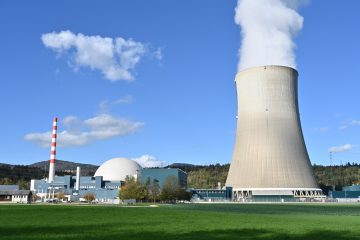The heat pipe, the microreactor and space
On 20 and 21 March 2025 was organised by the KTG specialist group "International developments in innovative reactor systems" organised the symposium "The heat pipe, the microreactor and space" with 65 participants from 8 countries (Brazil, Germany, Italy, Austria, Korea, Luxembourg, Switzerland, USA).
The symposium was motivated by the current race of the superpowers to Mars. The current journey to the red planet takes 6 to 9 months. Advanced nuclear propulsion systems could potentially halve this time.
The symposium began with an introduction to academic publishing from the perspective of DeGruyter Brill Verlag (Anne Weberling) and a tour of selected test rigs at the University of Stuttgart (heat pipe and SCO2-laboratories of the IKE, Advanced Manufacturing Laboratory of the MPA and Laboratory for Magnetoplasmadynamic Drives of the IRS).
The first day was rounded off with a get-together in the Eulenhof with an introductory lecture on the use of microreactors in space travel (Prof Georg Herdrich).
After welcoming remarks by the KTG chairman (Frank Apel) and the section spokesperson (Dr Andreas Schaffrath) and statements by the heads of the project management organisations PT GRS (Dr Helena Möller) and PTKA (Sylvia Gräber) on current and future focal points of reactor safety research, national work on water- and liquid-metal-filled heat pipes and microreactors was presented (Sergio Caceres, Dr Thomas Fuchs and Prof Jörg Starflinger). This was followed by an overview of related activities in Brazil (Prof Marcia Mantelli), Korea (Dr Lee) and the USA (Dr Joshua Hansel, Dr Steve Bajorek and Dr Shawn Campell).
In the last block of the event on MMR in space travel, global work on nuclear propulsion systems for the Mars mission (Dr Frank Jansen), legal aspects of the utilisation of microreactors in space (Dr Christian Raetzke) and possible future fields of activity for the conventional nuclear industry (Dr Thomas Mull) is presented.
The event was inspiring, not least because of its internationality, innovativeness and high relevance for the future. There was an intensive professional exchange, if not a spirit of optimism. Germany is (still) among the international leaders in this field. However, this is not a foregone conclusion and requires further public funding for work in this field. There are corresponding project proposals. These topics are particularly inspiring for the next generation of nuclear engineers. When you see how enthusiastically they spoke at the event and presented their laboratories and test stands, you don't have to worry about the future of nuclear technology.
On behalf of its members and the participants in the event, the KTG would like to thank the initiators and organisers of this successful symposium!















